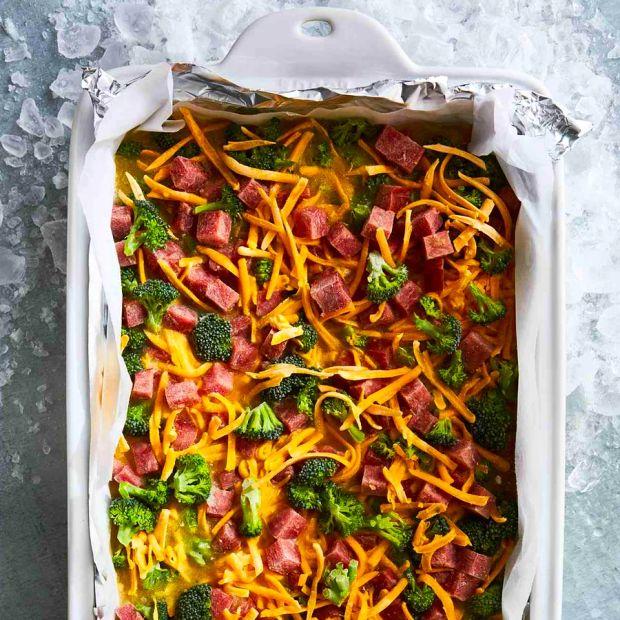How to Properly Freeze Casseroles for Later Use

At some point, you’ve probably received or given a frozen casserole—whether it was to celebrate the arrival of a new baby, offer condolences, or just to brighten someone’s day with a homemade meal.
However, as great as these make-ahead meals sound in theory, they don't always turn out as planned. I recall receiving a freezer lasagna from a thoughtful friend that, when baked, turned into a soggy mess instead of a delicious dinner.
The good news is, there’s a foolproof way to freeze and reheat casseroles, ensuring they’re just as tasty when you serve them later. With these simple steps, you'll become a meal-prep expert in no time! This guide will teach you how to freeze and reheat casseroles with ease.
Is Freezing Casseroles Really Possible?
Yes, you can freeze casseroles, but not all ingredients freeze equally well. While some casseroles are better frozen before cooking, others should be frozen only after they've been baked—more on that below.
Should You Freeze a Casserole Before or After Cooking?
So, should you cook your casserole first, allow it to cool, and then freeze it? Or is it better to freeze it before it hits the oven? The answer varies based on the ingredients.
Casseroles that include raw meats (such as poultry, seafood, or beef) should be fully cooked before freezing. On the other hand, casseroles with pre-cooked meat or no meat at all can be frozen uncooked. In fact, it's preferable to freeze meatless casseroles before baking, as the freezing and re-baking process can negatively affect the texture of certain ingredients.
Types of Casseroles That Don't Freeze Well
Not all casseroles are suited for freezing. Some ingredients, when baked, absorb moisture that forms into ice crystals once frozen. As they thaw, these crystals turn into steam, leaving you with a soggy casserole and a less-than-ideal texture.
Avoid freezing casseroles that contain dairy products (especially high-moisture cheeses like ricotta or cottage cheese), eggs, starchy vegetables, and watery veggies such as lettuce and cucumber.
Looking for some tasty casserole recipes that freeze well? Check out our collection of 15 Make-and-Freeze Casseroles for Time-Saving Dinners for some great ideas.
How to Properly Freeze Casseroles
Best Storage Containers for Freezing Casseroles
A freezer-safe casserole dish is the most practical choice since it can go directly from the oven to the freezer and vice versa. However, these dishes can be bulky and take up a lot of freezer space. To solve this, we recommend lining your dish with aluminum foil, leaving extra foil to hang over the edges. Once frozen, you can easily remove the casserole from the dish. The foil layer also helps protect your baking dish from cracking, which can happen when going straight from the freezer to the oven. Here's how to do it:
Instructions:
- Line a freezer-safe baking dish with aluminum foil, making sure to leave enough foil hanging over the sides. Assemble your casserole. If you're cooking it beforehand, do so now.
- Use the excess foil to cover the casserole, whether it's cooked or uncooked. Then, transfer the entire dish to the freezer and freeze for 24 to 36 hours.
- Once the casserole is fully frozen, use the foil to lift it out of the dish. Wrap the casserole in plastic wrap, label it with the date using masking tape, and feel free to include reheating instructions and the recipe name.
- Store the wrapped casserole back in the freezer.
How Long Can You Keep a Casserole in the Freezer?
When properly frozen using this method and stored at 0°F or below, casseroles can last up to six months. While they remain safe to eat for the full six months, the quality may start to decline after three months.
How to Safely Thaw and Reheat Casseroles
Avoid thawing your casserole before baking. As it defrosts, excess liquid may accumulate, leading to a soggy bottom in your casserole.
Instead, simply take the casserole out of the freezer, remove all packaging, place it in a baking dish, and bake it directly.
A good rule of thumb for cooking a frozen casserole is to cook it for twice the time the original recipe suggests, but keep the temperature the same. Cover the casserole with foil to prevent the top from burning, and uncover it during the last 15 minutes of baking.
Use a digital thermometer to check the casserole's internal temperature — once it reaches 165°F, it's ready! Add any delicate garnishes like herbs after cooking and serve.

1

2

3

4

5
Evaluation :
5/5